Powdery mildew, caused by the fungal organism Erysiphe polygoni, is one of the most commonly occurring diseases on many types of beans. Green beans, pole bean, long bean, Italian bean, and snow pea crops are all susceptible to powdery mildew in tropical and subtropical climates. Although the causal organism rarely causes extensive damage, significant yield losses (up to 69%) were reported in Columbia County when infection occurred in dry beans prior to flowering (Schwarts et al. 2005). Accurately identifying this disease and immediately taking action for control are critical to effectively prevent spread of powdery mildew in order to reduce significant losses of yield and quality.
Symptoms
Powdery mildew can affect all above-ground parts of bean plants. Initial symptoms appear as small and white talcum-like spots (Figure 1), which most commonly are seen on the upper surface of leaves. These spots increase in size and run together to form a whitish, powdery growth, gradually spread over a large area of the leaves (Figures 2, 3, and 4), and can spread even farther to the stems. As the symptoms develop, infected leaves may gradually curl downward, color changed from pale yellow to brown (Figure 5), die, and fall off. Under severe conditions, the entire leaves and plants could be covered by white cottony mycelial growth of the fungus (Figure 6). Symptoms on infected leaves may vary with bean varieties, but powdery mildew may cause the leaves to be twisted, buckled, or distorted. The powdery mildew fungus usually does not grow on bean pods except pea pods (Davis et al. n.d.). However, powdery mildew spots can develop on snap bean pods (Pernezny and Stall 2005). The development of powdery mildew symptoms is not often observed on pole bean in Miami-Dade County, but it is apparent on both Italian bean and long bean (dark green type) (Figures 7 and 8) grown under the same conditions. Severely infested plants may have reduced yields, shortened production periods, and even completely die (Figure 8). Severe symptoms of powdery mildew infection can also be seen in snap beans when humidity is high (Figure 9).
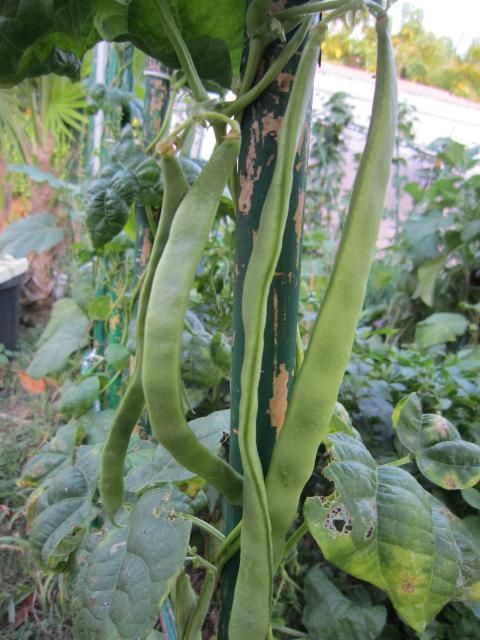
Credit: Qingren Wang, UF/IFAS
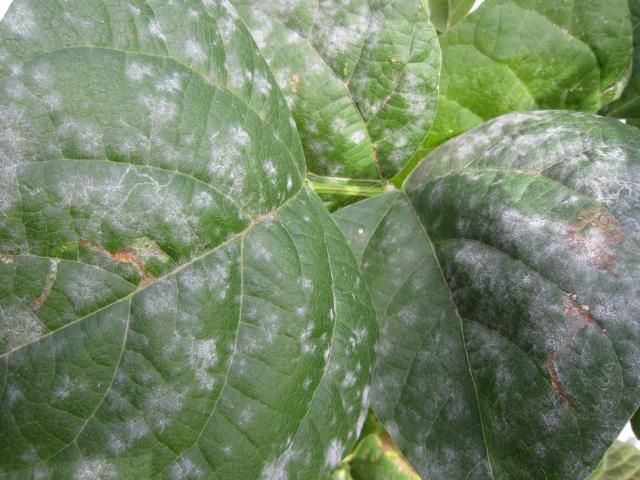
Credit: Qingren Wang, UF/IFAS
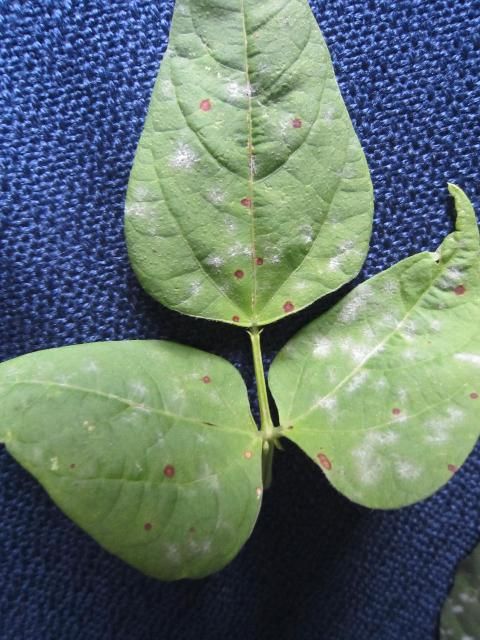
Credit: Qingren Wang, UF/IFAS
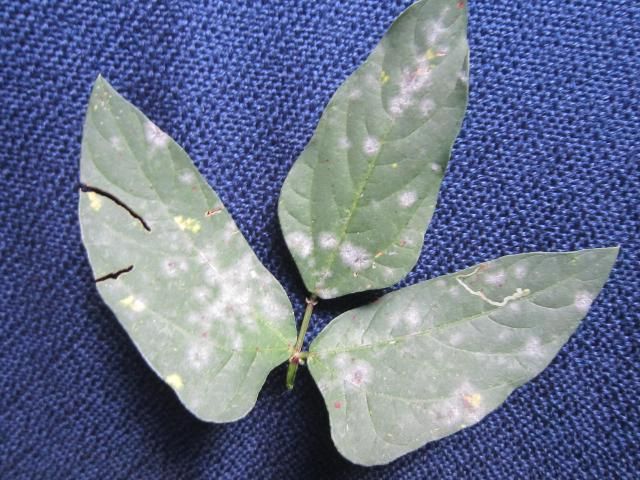
Credit: Qingren Wang, UF/IFAS

Credit: Qingren Wang, UF/IFAS
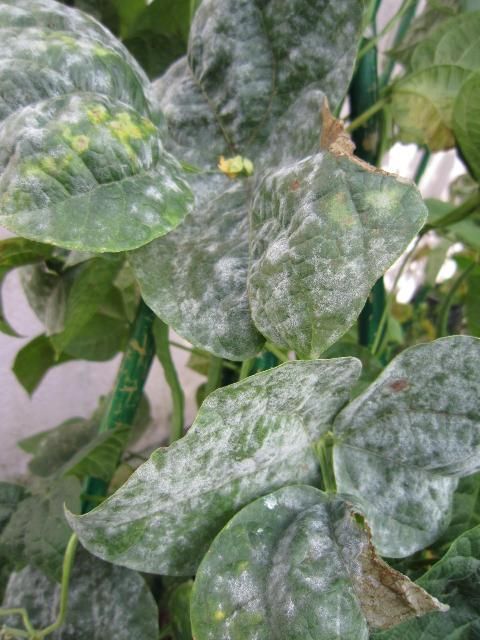
Credit: Qingren Wang, UF/IFAS
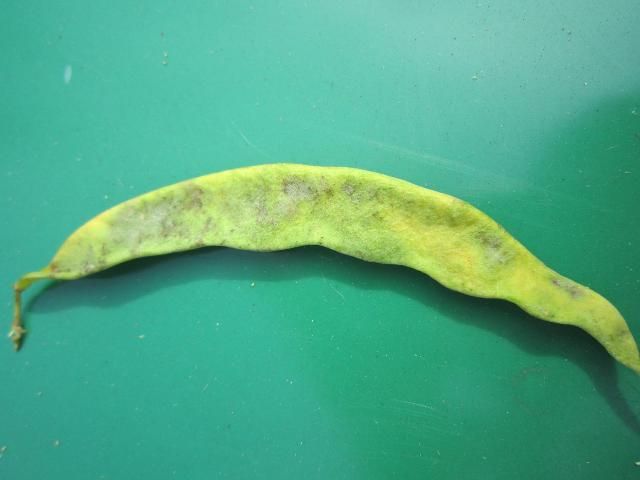
Credit: Qingren Wang, UF/IFAS
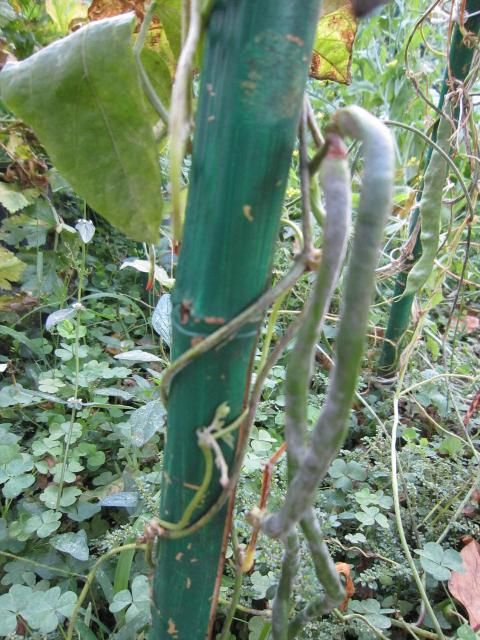
Credit: Qingren Wang, UF/IFAS
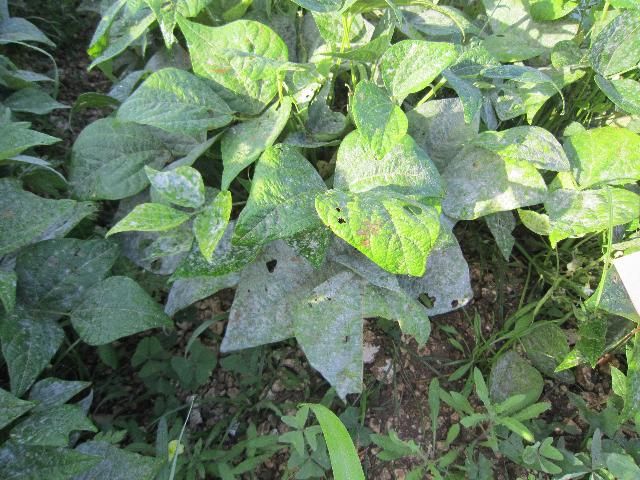
Credit: Qingren Wang, UF/IFAS
Infection and Spread
The fungus of powdery mildew grows as thin layers of mycelium (fungal tissue) on the surface of the affected leaves. Spores, which are the primary means of dispersal, make up the bulk of the visible white, powdery growth. Powdery mildew spores can be easily carried by wind to new hosts. The spores can germinate and infect beans in the absence of free water. Powdery mildew growth generally does not require moist conditions (Davis et al. n.d.); however, increased humidity can increase the severity of the disease (Pernezny and Stall 2005). Moderate temperatures (60°F to 80°F) and shady conditions generally are the most favorable environmental factors for the development of powdery mildew (Figure 6). Strong and direct sunlight with high temperatures (over 90°F) can noticeably reduce the incidence of the disease.
Management Practices
Preventive Practices
Prevention is the optimal method for controlling powdery mildew. Growing resistant varieties or cultivars of beans wherever available, planting in full sun, and following good cultural practices can adequately control powdery mildew in most cases.
Cultural Practices
Plant in sunny areas as much as possible and provide good air circulation. Overhead watering may help reduce powdery mildew, because spores might be washed off the plants. However, such a measure may contribute to other pest management concerns.
Fungicide Application
In vegetable fields, the least-toxic fungicides may be used to prevent, protect from, or eradicate powdery mildew. Apply protective fungicides to highly susceptible varieties before the disease appears, and utilize eradicative fungicides at the earliest signs of the disease. Once powdery mildew growth becomes prevalent, control with any fungicide can be difficult. Table 1 lists recommendations for fungicides for control of powdery mildew on beans. Make sure to follow the application instructions on the labels.
References
Davis, R. M., W. D. Gubler, S. T. Koike, M. L. Flint, and P. N. Galin. n.d. Plant Pathology, UC Statewide IPM Program, University of California, Davis, CA 95616.
Pernezney, K., and W. M. Stall. 2005. Powdery Mildew of Vegetables. PP-14. Gainesville: University of Florida Institute of Food and Agricultural Sciences.
Schwarts, it al H. F., J. R. Stedman, R. Hall, and R. L. Forster. 2005. Compendium of Bean Diseases, Second Edition. The American Phytopathological Society.